Gochang Dosoram Hermitage (도솔암(고창))
7.3Km 2024-04-07
294, Dosol-gil, Gochang-gun, Jeonbuk-do
+82-63-564-2861
Dosoram Hermitage, along with Seonunsa Temple, is thought to have been built during the Baekje era (18 BC-AD 660). The temple is managed by Seonunsa Temple on Dosolsan Mountain in Gochang-gun, Jeollabuk-do.
Ungok Ramsar Wetland (고창 운곡람사르습지)
8.3Km 2024-04-07
362 , Ungokseowon-gil, Gochang-gun, Jeonbuk-do
+82-63-560-2720
Ungok Ramsar Wetland, registered as Ramsar Wetland in 2011, is home to endanged species and various rare animals and flowers. The wetland also has four different courses that will take visitors all around the wetlands. Course 1 takes approximately 50 min and is 3.6 km-long. Course 2 takes approximately 2 hour 30 minutes and is 9.5 km-long. Course 3, the longest out of the 4 courses takes approximately 3 hours 30 minutes and is 10.2 km-long. Last, Course 4 takes approximately 2 hours 50 minutes and is 10.1 km-long.
NABIdream Hanok Stay (한옥펜션 나비의 꿈)
8.3Km 2024-12-24
129 , Naesosa-ro, Buan-gun, Jeonbuk-do
+82-63-582-7651
Butterfly Dream is a modern hanok stay in Naesosa, Byeonsanbando National Park, Jeollabuk-do. The spacious, grassy yard and pine trees add to this place’s tranquility. A variety of guestrooms are offered and most come with a kitchen and individual barbecue area.
Byeonsan Natural Recreation Forest (변산자연휴양림)
9.1Km 2024-04-07
3768 Byeonsan-ro, Byeonsan-myeon, Buan-gun, Jeonbuk-do
Byeonsan Natural Recreation Forest is a coastal natural recreation forest located within the Byeonsanbando National Park. Offering views of both mountains and sea, it boasts a distinctive charm and provides forest tour, experiential program, and accommodation facilities. Visitors can engage in simple crafts using pine cones and pine trees, as well as forest strolling programs such as walking through the pine forest. Nearby attractions include Chaeseokgang Cliff in Gyeokpo and Byeonsan Beach.
Buan Naesosa Temple (내소사 (부안))
9.3Km 2025-12-16
191 Naesosa-ro, Jinseo-myeon, Buan-gun, Jeollabuk-do (Naesosa Ticket Booth)
+82- 63-583-7281
Naesosa Temple was built by Buddhist Monk Hye-Gu in 633 during the Baekje dynasty and was rebuilt by Monk Cheong-Min in 1633 during the Joseon dynasty. The Daeungbojeon Hall was built at this time. In 1986, the temple area was designated as a culturally protected area.
On both sides of the main gate are large fir trees, which also line the path into the temple. Upon reaching the temple itself, the first thing that draws attention is the 1000-year-old Dangsan tree. Long ago, people used the base of the tree as a site of prayer.
Housed in Beomjonggak is a bronze bell that can be found in many Buddhist temples. This particular bell was made during the Goryeo era and is engraved with three images of Buddha, called Samjonsang. The center building of the temple, called Daeungbojeon Hall is also an artistic masterpiece, decorated with splendid colors and designs. The flower Salmun doors featuring lotus and chrysanthemum flowers add another element of traditional beauty to the building.
◎ Travel Information to Discover Hallyu’s Charm - K-Drama "Dae Jang Geum (2003)"
Viewers who enjoyed the timeless classic "Dae Jang Geum (Jewel in the Palace)" might remember the scene where Jang-geum throws stones into a pond with Min Jeong-ho watching from afar. That memorable scene was filmed at the pond within the Naesosa Temple complex. The tranquil temple atmosphere and the beautiful surroundings came together to deepen the emotional resonance of the drama.
Mohang Beach (모항해수욕장)
10.5Km 2024-04-07
22, Mohang-gil, Buan-gun, Jeonbuk-do
+82-63-580-4413
Mohang Beach is situated in Byeonsan-myeon, Buan-gun, Jeollabuk-do. It is set against the beautiful mountains of Byeonsanbando National Park and the clear waters of the west coast. Unlike many beaches along the west coast, white sand can be found even at low tide and the beach is great for fishing.
Designated a tourist site in December of 2000, the area has been equipped with a family hotel, camping sites, and a seaside cafe. Nearby, there is a mud flat, a population of horned holly trees (Natural Monument No. 122), and a scenic drive.
Gochang Dolmen Site [UNESCO World Heritage] (고창 고인돌 유적 [유네스코 세계문화유산])
11.1Km 2024-04-07
74 Goindolgongwon-gil, Gochang-eup, Gochang-gun, Jeonbuk-do
+82-63-560-8666
Dolmens are representative tomb structures from the Bronze Age, distributed across Korea with over 30,000 examples. Gochang is an area rich in dolmens, boasting around 1,600 of them. Here, visitors can explore Gochang's dolmen park, which features dolmens constructed during the 6th to 5th centuries BC, along with a museum offering insights and hands-on experiences related to dolmens and the Bronze age.
Gochang Dolmen Museum (고창고인돌박물관)
11.1Km 2024-04-07
74, Goindolgongwon-gil, Gochang-gun, Jeonbuk-do
+82-63-560-8666
At the Gochang Dolmen Museum, visitors can view diverse relics and learn about the Bronze Age and the dolmen (tomb, gravesite, etc.) cultures of the world. In addition to a variety of exhibition halls, the museum also features interactive exhibit spaces that help visitors further explore the main themes of the museum. There is also a mock-up of an ancient dugout hut where visitors may take photos. Outside the museum is the Bronze Age theme park, which features a life-size prehistoric village replica, a dolmen experience zone, and an exhibition zone displaying a representative memorial service from the Bronze Age.
Dongho Beach (동호해수욕장)
11.3Km 2025-01-08
Dongho-ri, Gochang-gun, Jeonbuk-do
+82-63-560-2646
Dongho Beach is located south of Gomsoman Bay, between the Byeonsan Peninsula of Buan and Gochang-gun, Jeollabuk-do. Skirting the 1-kilometer-long white sandy beach lies a green forest with pine trees hundreds of years old. The sunset viewed from the forest is particularly eye-catching as the soft pink from the falling sun covers the sky. The water just offshore is relatively shallow, varying in depth between 0.5 and 1.5 meters. The high salt content in the seawater makes it an ideal place for sea and sand bathing.
On the hill above the forest is Suseongdang, a shrine honoring the god of the seas, where the local fishermen gather each year to pray for big catches.
Jiksopokpo Falls - Jeonbuk National Geopark (직소폭포 (전북 서해안권 국가지질공원))
12.0Km 2025-03-15
62, Silsang-gil, Buan-gun, Jeonbuk-do
+82-63-580-4331
Jiksopokpo Falls is located within Bongnaegugok Valley. The waterfall is the largest in Byeonsanbando National Park, thundering down 30 meters. The waterfall can be reached by a hiking trail starting at Naesosa Temple. Known as one of the most beautiful sights in Byeonsanbando National Park, the waterfall is very popular with tourists.
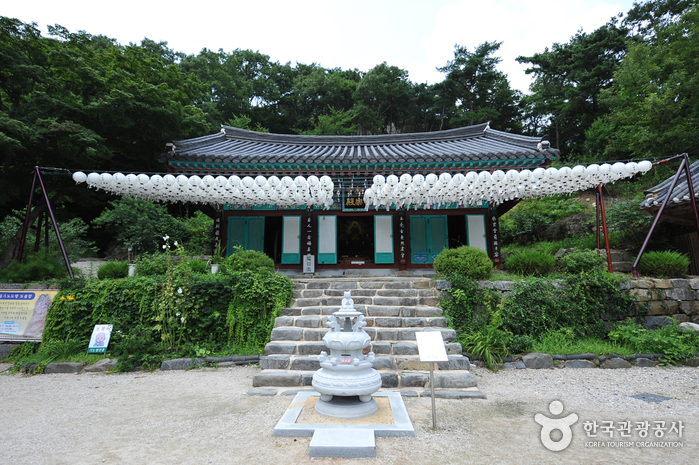

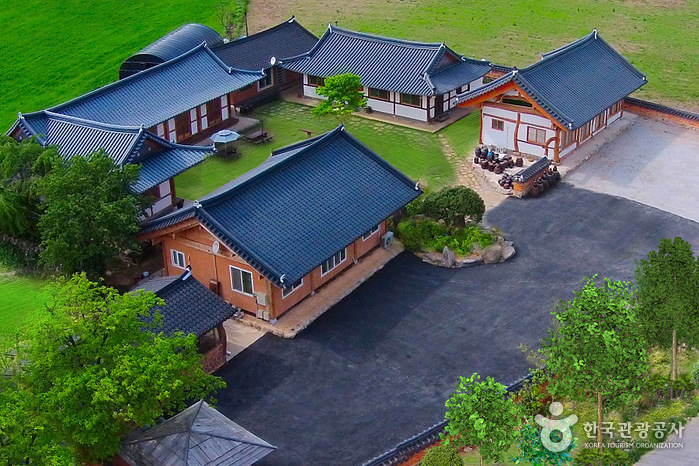
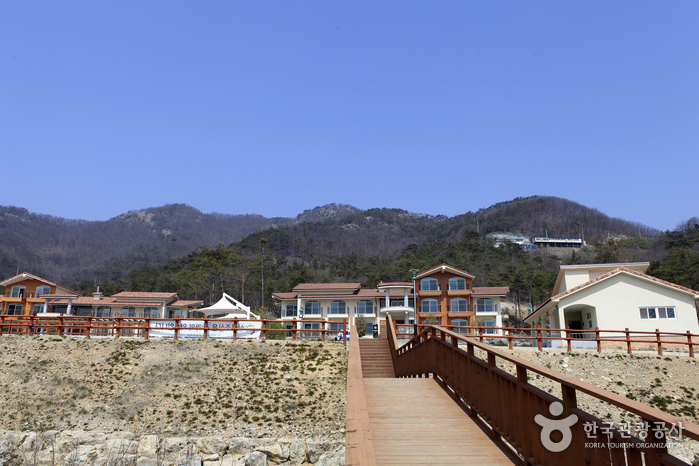
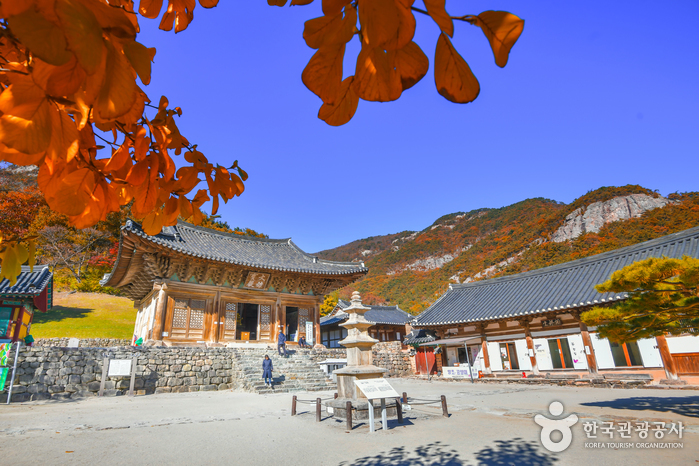
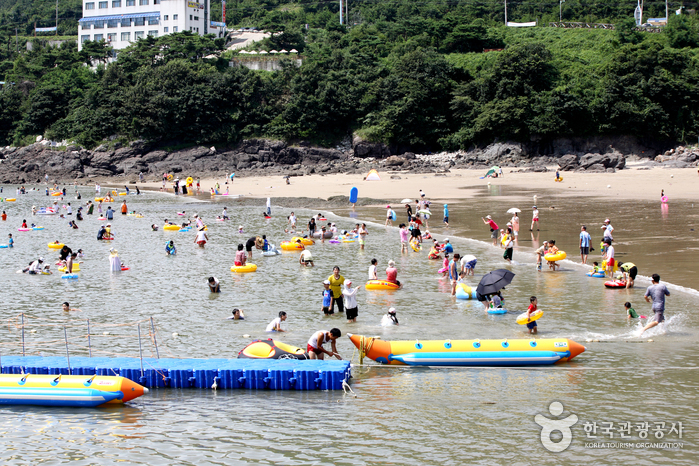
![Gochang Dolmen Site [UNESCO World Heritage] (고창 고인돌 유적 [유네스코 세계문화유산])](http://tong.visitkorea.or.kr/cms/resource/17/2604617_image2_1.jpg)
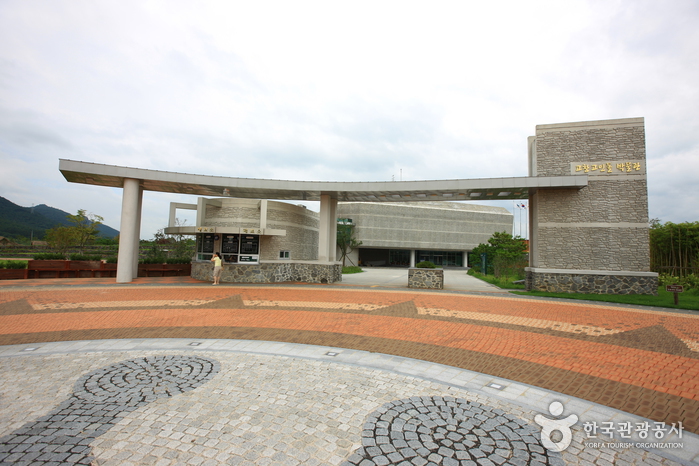
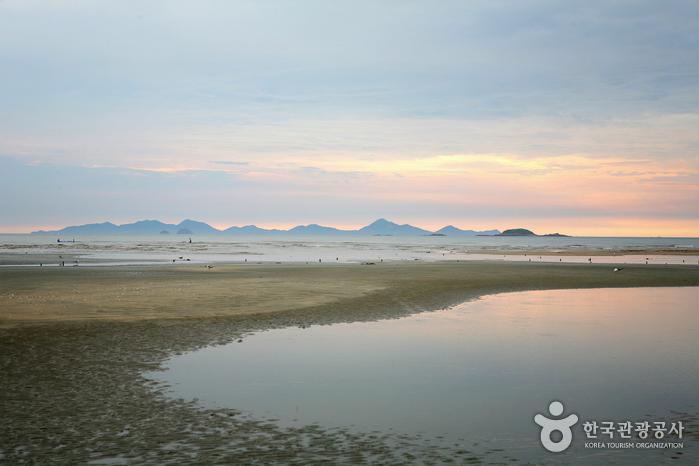
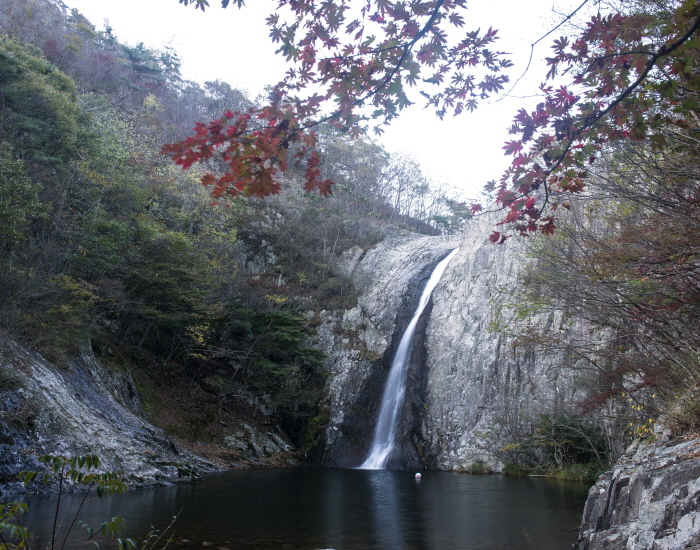
 English
English
 한국어
한국어 日本語
日本語 中文(简体)
中文(简体) Deutsch
Deutsch Français
Français Español
Español Русский
Русский